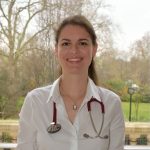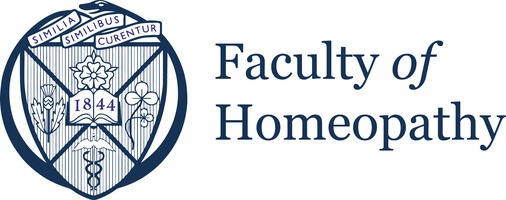During this challenging time, it is extremely important to keep physically active. There are many different ways to do so, and since everyone is unique, there is no golden standard, however, there is one golden rule: Enjoy whatever you do!
I have already shared some interesting facts about this topic in my newsletter
The Power of Exercising but I would like to recall a few: Physical exercise has shown to be one of the best-proven methods to relieve fatigue resulting from
cancer or from its treatments 1.
Wendy Demark-Wahnerfried, PhD of Duke University, in the Journal of Clinical Oncology, suggested a drop in relapse rate of 50 to 60% with exercise in patients with breast cancer. This is such an impressive effect that she doesn’t hesitate to compare it to the powerful effects of chemotherapy with Herceptin® (for certain types of breast tumours), a revolutionary drug qualified in 2005 as a ‘major turning point in the eradication of suffering and death from cancer’. However, unlike pharmacological anti-hormone treatments, the protective effect of exercise is not limited to oestrogen-positive breast cancer, nor does it have its side effects.
Two studies, one by the Mayo Clinic, the other by the University of North Carolina, show comparable effects of exercise on oestrogen-negative breast cancers 2,3. Moreover, still better than Herceptin®, physical exercise provides benefits to patients with a broad variety of cancers. A comparable level of protection has been shown against recurrence or aggravation of cancer of the prostate (as much as a 70% drop in the risk of death in men over the age of sixty-five), of the colon and of the rectum. A protective effect has also been documented against cancer of the ovaries, the uterus, the testicles and the lung 4,5
Why is keeping active so important?
When exercising, similarly when receiving a massage, you tell your body it matters, it is loved and respected, and also, it gets it own desire to live. The regulation and defence mechanisms that contribute to fighting cancer can be directly stimulated by exercise:2,3, 5-16
1. Exercise reduces the quantity of adipose tissue, the principal storage site of carcinogenic toxins in humans.
2. Physical activity modifies our hormonal balance by reducing the excess of oestrogen and testosterone that stimulates the growth of cancers (in particular, cancer of the breast, prostate, ovary, uterus and testicles).18
3. Blood-sugar levels are also reduced by exercise, and, as a result, the secretion of insulin and IGF, which contribute so dramatically to tissue inflammation and to the growth and spread of tumours.13,17,18
4. It even acts directly on the cytokines responsible for inflammation, by lowering their level in the blood.19
5. Physical activity, like meditation, has a direct effect on the immune system, seemingly protecting it against the stress of bad news. This is through endorphins, neurotransmitters which are released in our brain and boost our immune system making Natural Killer cells (NK) more active against cancer cells.20
Exercising during the lock-down
Especially now it is very important to keep our immune system fit. And especially now, while being locked at home, it is even more challenging. Being confined in a small place can create anxiety. As if it wasn’t already enough feeling anxious about the virus!
Stop here!!… and take a deep breath…….
What if you could change the situation?What if you could change the situation?What if you could actually make GOOD USE of being locked at home?
View it this way: This is an excellent opportunity to commence a new habit: exercising at home. Even if it’s only 15 or 20 minutes, I assure you, you will notice the difference. I want to introduce you to Intrepid Breath.
It is an amazing way to practice yoga whenever you want and wherever you prefer. Wendy Campbell has her own history of cancer and she found yoga profoundly helpful in her journey. She founded “Intrepid Breath” to allow people to benefit from yoga at home. You can read more about her and her mission on her website: www.intrepidbreath.com
Although I haven’t had the pleasure to meet Wendy personally yet, I met her business partner Luigi Cassinelli. We seem to have a similar philosophy about helping cancer patients and when I asked them to give a helping hand to those who couldn't afford the subscription (which is only £16 per month), Wendy and her partner agreed to give 1 free subscription for every 5 subscribers referred by me.
So the more people subscribe, the more can benefit from the healing power of yoga!!
The only thing you have to do is stating my name in the field of “additional information” when you subscribe.
If this wasn’t generous enough, Wendy and Luigi also offered to give free vouchers to try one lesson for free!
Now you have no excuse! :-)
You can register following this link:
https://intrepidbreath.com/en/user/register
References:
1. A. Sood, T. I. Moynihan, ‘Cancer—related fatigue: an 'update’ Current OncologyReports, 7(4), 2005: 277—82.
2. A. Bardia, L. C. Hartmann, C. M. Vachon, et al. ‘Recreational physical activity and risk of postmenopausal breast cancer based on hormone receptor-status’ Archives of Internal Medicine, 166(22), 2006: 2478—83.
3. S. A. Adams, C. E. Matthews, 1. R. Hebert, et al. ‘Association of physical activity with hormone receptor status: the Shanghai Breast Cancer Study’ Cancer Epidemiology, Biomarkers & Prevention, 15(6), 2006: 1170—8.
4. J. A. Meyerhardt, E. L. Giovannucci, M. D. Holmes, et al. ‘Physical activity and survival after colorectal cancer diagnosis’ Journal of Clinical Oncology, 24(22), 2006:3527—34.
5. C. M. Friedenreich, ‘Overview of the association between physical activity, obesity and cancer’ Eurocancer (Paris: John Libbey Eurotex; 2005).
6. B. Tehard, C. M. Friedenreich, I. M. Oppert, F. Clavel-Chapelon, ‘Effect of physical activity on women at increased risk of breast cancer: results from the E3N cohort study’ Cancer Epidemiology, Biomarkers & Prevention, 15(1), 2006: 57—64.
7. J. A. Meyerhardt, D. Heseltine, D. Niedzwiecki, et al. ‘Impact of physical activity on cancer recurrence and survival in patients with stage III colon cancer: findings from CALGB 89803’ Journal of Clinical Oncology, 24(22), 2006: 3535—41.
8. M. D. Holmes, W. Y. Chen, D. Feskanich, C. H. Kroenke, G. A. Colditz, ‘Physical activity and survival after breast cancer diagnosis’ JAMA, 293(20), 2005: 2479—86.
9. E. Giovannucci, Y. L. Liu, M. F. Leitzmann, M. Stampfer, W. C.W111'ett, A‘ Prospective Study of Physical Activity and Incident and Fatal Prostate Cancer’ Archives of Internal Medicine, 165, 2005: 1005—10.
10. D. Ornish, G. We1'dner,.W. R. Fair, et al. ‘Intensive lifestyle changes may affect the progression of prostate cancer’ Journal of Urology, 174(3), 2005: 1065—9; discussion 9-70.
11. A. V. Patel, C. Rodriguez, E. J. Jacobs, L. Solomon, M. J. Thun, E. E. Calle,‘Recreational physical activity and risk of prostate cancer in a large cohort of US men’ Cancer Epidemiology, Biomarkers & Prevention, 14(1), 2005: 275—9.
12. T. I. L. Nilsen, ‘Recreational physical activity and risk of prostate cancer: A prospective population-based study in Norway (the HUNT study)’ International Journal of Cancer 2006.
13. R. J. Barnard, I. H. Gonzalez, M. E. Liva, T. H. Ngo, ‘Effects of a low-fat, high-fibre diet and exercise programme on breast cancer risk factors in vivo and tumour cell growth and apoptosis in vitro’ Nutr Cancer, 55(1), 2006: 28—34.
14. M. L. Irwin, ‘Randomised controlled trials of physical activity and breast cancer prevention’ Exercise & Sport Sciences Reviews, 34(4), 2006: 182—93.
15. P. E. Abrahamson, M. D. Gammon, M. J. Lund, et al. ‘Recreational physical activity and survival among young women with breast cancer’ Cancer, 107(8), 2006: 1777—
85.
16. N. Mutrie, A. M. Campbell, F. Whyte, et al. ‘Benefits of a supervised group exercise programme for women being treated for early-stage breast cancer: pragmatic randomised controlled trial’ British Medical Journal, 334(7592), 2007: 517..
17. P. S. Leung, W. J. Aronson, T. H. Ngo, L. A. Golding, R. J. Barnard, ‘Exercise alters the IGF axis in vivo and increases p53 protein in prostate tumour cells in vitro’ Journal of Applied Physiology, 96(2), 2004: 450—54.
18. R. J. Barnard, T. H. Ngo, P. S. Leung, W. J. Aronson, L. A. Golding, ‘A low-fat diet and/or strenuous exercise alters the IGF axis in vivo and reduces prostate tumour cell growth in vitro’ Prostate, 56(3), 2003: 201—6.
19. L. H. Colbert, M. Visser, E. M. Simonsick, et a1. ‘Physical activity, exercise, and inflammatory markers in older adults: findings from the Health, Aging and Body Composition Study’ Journal of the American Geriatrics Society, 52(7), 2004: 1098—104.
20. Jonsdottir IH et al, Physical exercise, endogenous opioids and immune function. Acta Physiol Scand Suppl. 1997;640:47-50.




